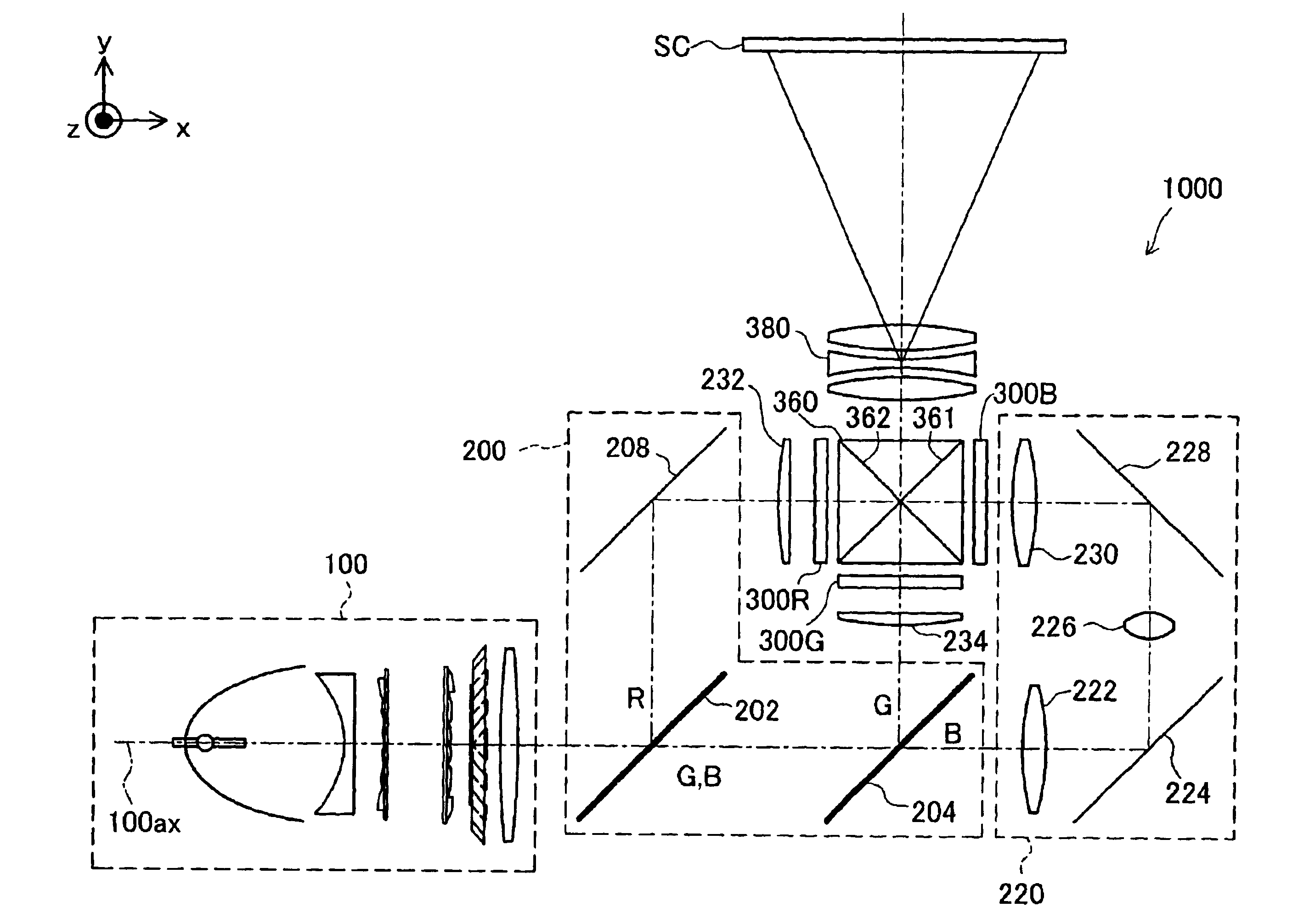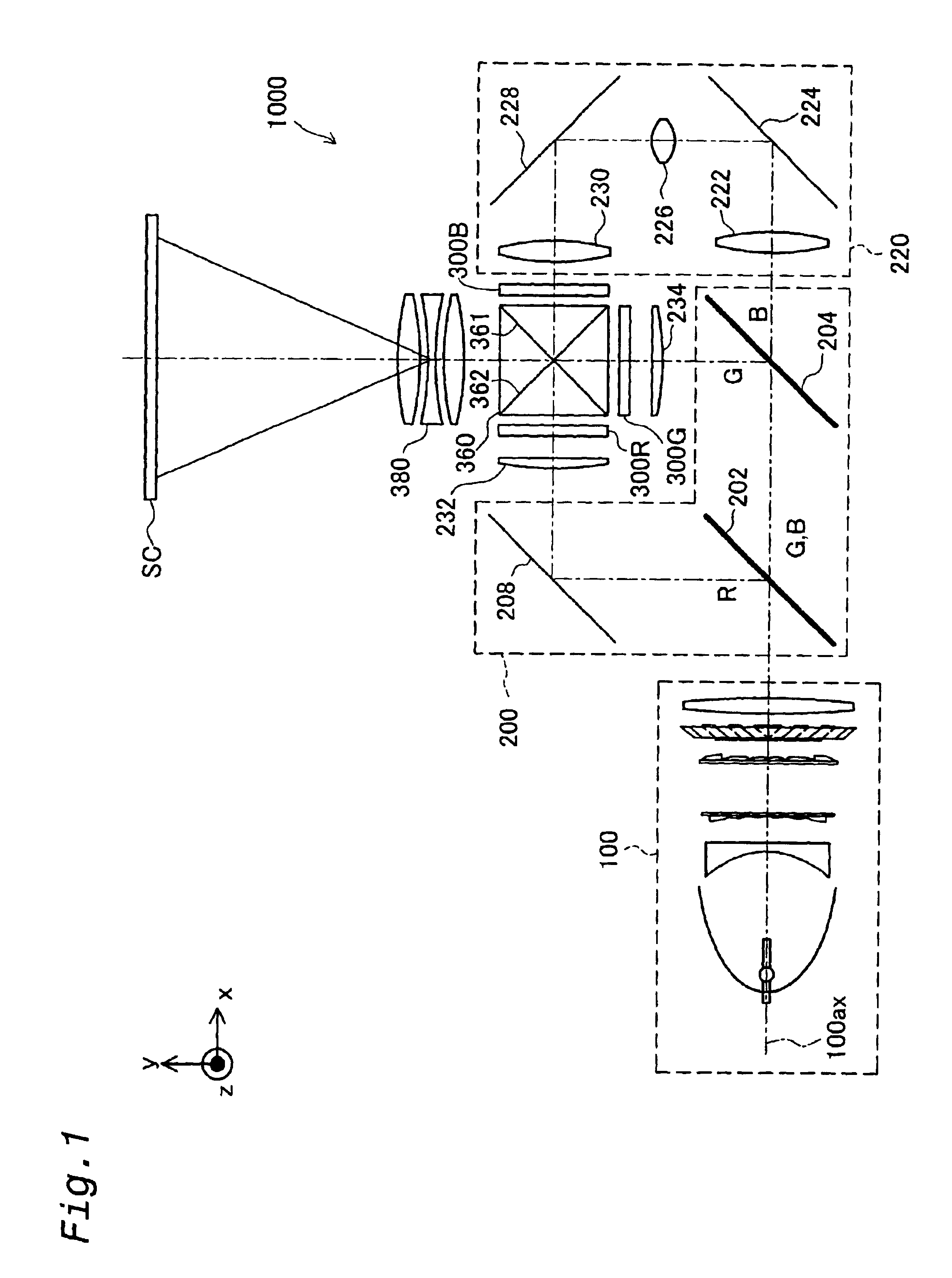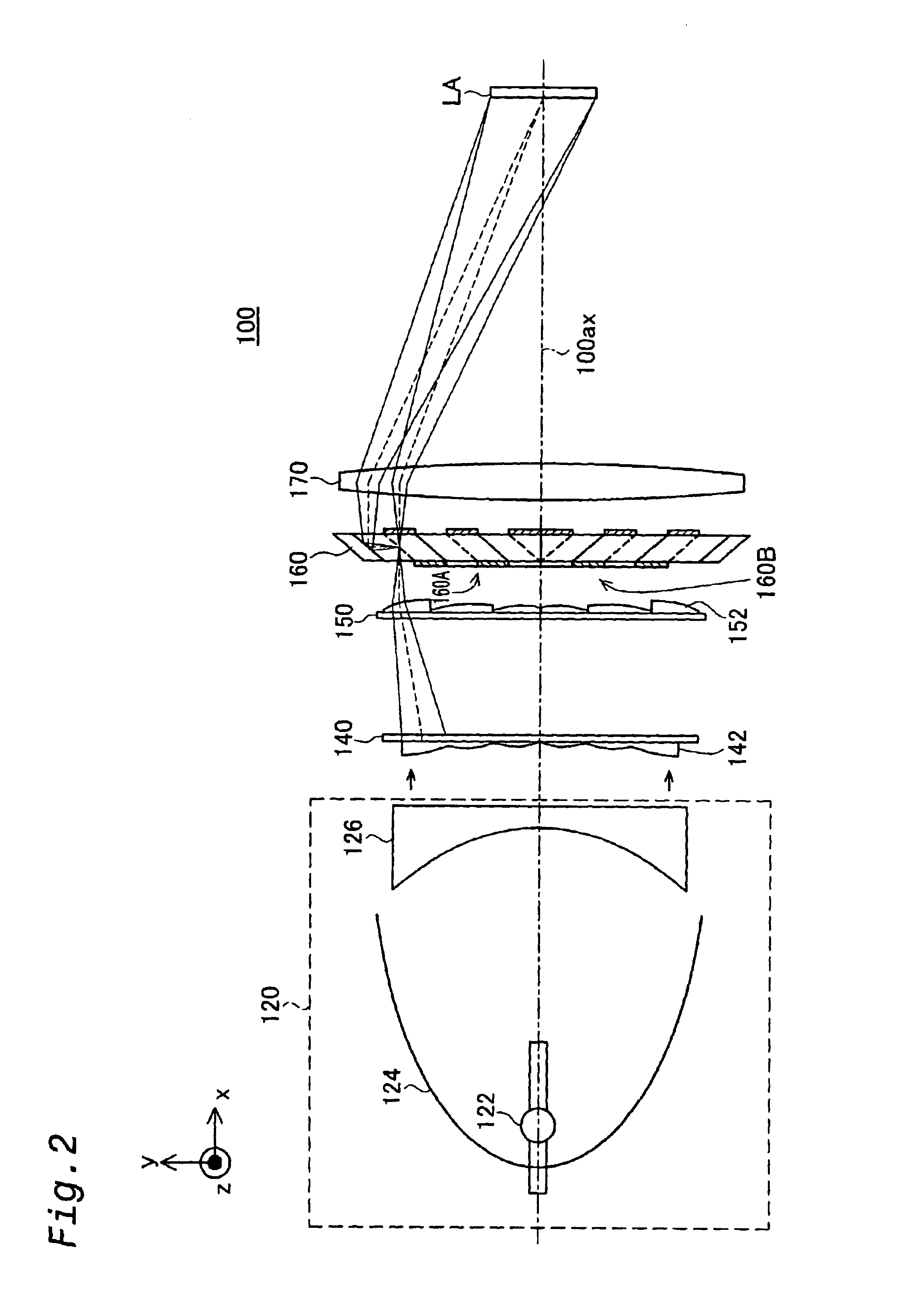Projector
a projector and projector technology, applied in the field of projectors, can solve the problems of difficult installation of cooling fans, optical characteristics may drop, distortion and deterioration of polarizing plates, etc., and achieve the effects of reducing temperature rise, high thermal conductivity, and relatively high thermal conductivity of the base fram
- Summary
- Abstract
- Description
- Claims
- Application Information
AI Technical Summary
Benefits of technology
Problems solved by technology
Method used
Image
Examples
first embodiment
A.
[0053]One mode of carrying out the present invention is discussed below as a preferred embodiment. FIG. 1 is a simplified schematic diagram showing an example of a projector. Projector 1000 comprises an illumination optical system 100, a color separation optical system 200, a relay optical system 220, three liquid crystal light valves 300R, 300G, 300B, a cross dichroic prism 360, and a projection optical system 380.
[0054]Light output from the illumination optical system 100 is separated by the color separation optical system 200 into colored light of the three colors of red (R), green (G) and blue (B). The separated colored lights are modulated by liquid crystal light valves 300R, 300G, 300B in response to image information. Modulated lights are combined by the cross dichroic prism 360, and the composite light is projected onto a screen SC by the projection optical system 380. By means of this an image is displayed on the screen SC.
[0055]FIG. 2 is an illustrative diagram showing a...
second embodiment
B.
[0117]In the First Embodiment, as shown in FIGS. 6 and 8, the first polarizing plate 320Gi, together with the light-transmissive substrate 321, constitutes a polarization control component, but instead of this, the plate 320Gi, together with the field lens 234, may constitute a polarization control component.
[0118]FIG. 10 is an explanatory diagram showing a field lens 234′ with the first polarizing plate 320Gi stuck to it. This field lens 234′ is formed of sapphire. As shown in the drawing, the first polarizing plate 320Gi is stuck to the flat face of the plano-convex field lens 234′.
[0119]FIG. 11 is an explanatory diagram showing a holder 750 that holds a polarization control component consisting of the first polarizing plate 320Gi and the field lens 234′ shown in FIG. 10. The holder 750 comprises a metal fixing section 752 and an attaching section 754. The fixing section 752 has a cross sectional shape of a roughly L-shape, and a roughly circular opening on the face through whic...
third embodiment
C.
[0130]In the First Embodiment, as shown in FIGS. 6 and 9, the third polarization control component consisting of the liquid crystal panel 310G and the pair of light-transmissive substrates 311, 312 is held by the holder 730, and the holder 730 is directly fixed to the base frame 600, but the holder could also be fixed to the base frame 600 via some other part.
[0131]FIG. 14 is an explanatory diagram showing a holder 730A that holds the third polarization control component consisting of the liquid crystal panel 310G and the pair of light-transmissive substrates 311, 312. The holder 730A is substantially similar to the holder 730 of FIG. 9, but a fixing section 732A is modified. Specifically, the fixing section 732A of this embodiment has two projecting portions.
[0132]As explained in FIG. 9, the fixing section 732A and attaching section 734 are joined together with the third polarization control components 310G, 311, 312 sandwiched between. Also, in this embodiment the holder 730A is...
PUM
 Login to View More
Login to View More Abstract
Description
Claims
Application Information
 Login to View More
Login to View More - R&D
- Intellectual Property
- Life Sciences
- Materials
- Tech Scout
- Unparalleled Data Quality
- Higher Quality Content
- 60% Fewer Hallucinations
Browse by: Latest US Patents, China's latest patents, Technical Efficacy Thesaurus, Application Domain, Technology Topic, Popular Technical Reports.
© 2025 PatSnap. All rights reserved.Legal|Privacy policy|Modern Slavery Act Transparency Statement|Sitemap|About US| Contact US: help@patsnap.com



